Anatomy of the Pilates Reformer
Whether you are a newbie to pilates, or a frequent reformer user- it always helps to have a refresh on the anatomy of the pilates reformer. The pilates reformer is an excellent workout for people recovering from injuries, people with scoliosis, hypermobility, and anyone who wants to target certain muscle groups and strengthen up. Here is everything you need to know about the pilates reformer machine:
what is a reformer?
a reformer is a bed-like platform that rolls back and forth on wheels with the assistance of springs and pulleys called “straps”
meet the reformer
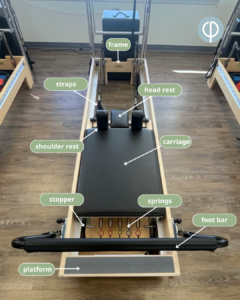
carriage
the carriage is a torso-sized mat that glides back and forth on rails to accommodate different positions. The carriage is attached to the reformer through the springs.
springs
the springs create resistance on the reformer. Adding a spring, adds resistance, and removing a spring decreases resistance. The springs will move the carriage along the frame with your own body weight and strength
red spring: most resistance
green spring: medium resistance
blue spring: least resistance
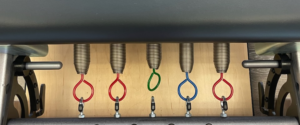
foot bar
the foot bar provides a place for the feet or hands to push off, in order to move the carriage. The foot bar can be adjusted to different positions, to accommodate different exercises.
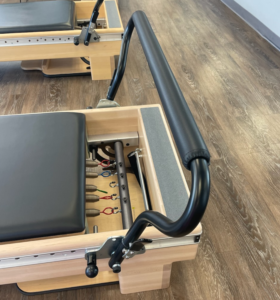
platform
the platform has a non-stick surface and is intended to be used for standing exercises that typically target the hip adductors or hamstrings.
straps
these reside at the top of the frame, next to the shoulder rests. You can put your feet or hands in them, and they help glide the carriage along the frame.
short strap: the shorter loop inside of the longer loop, often used for hands
long strap: the longer loop, often used for feet
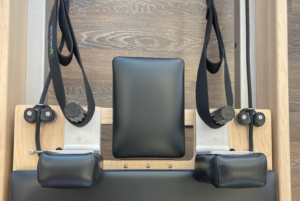
pegs
the pegs are a place to rest the straps while they are not in use. You put the long strap around the peg.
head rest
the headrest is a place to lie your head while doing different exercises. it is adjustable and can be raised or lowered to ensure you feel comfortable and supported.
shoulder rest
when lying on the reformer, and pushing off the foot bar with your feet, your shoulders will press along the foam pads. occassionally, the shoulder pads are used for hand holds when in the pushup position.
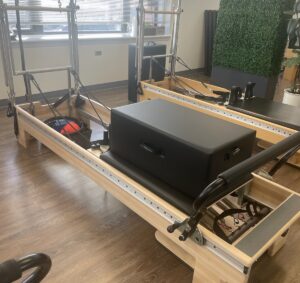
box
adding the box to the reformer allows for a larger range of motion and work different muscles. the box sits on top of the reformer.
Starting a new fitness class can be intimidating, especially if you are using equipment you have never seen before. Here at PhysioElements, we welcome pilates newbies with open arms, and are happy to show you how to use the reformer, as we walk you through our Essential Flow. Our pilates instructors will introduce you to the reformer, go through the equipment, and make sure you are ready for your first class.
Interested in pilates reformer classes? Check out our schedule HERE.
